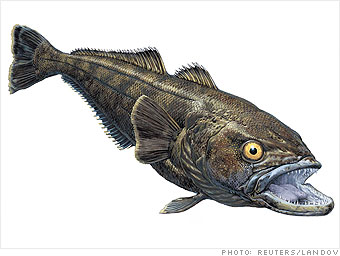
Last week I decided to splurge and went to my fishmonger and purchased a nice thick fillet of Chilean sea bass. The beautiful white buttery tasting fish grilled up in just a few minutes and made a mouth watering meal. But I wonder if it would have tasted so good had I known the fish's real name. The Patagonian Toothfish (Dissostichus eleginoides) lives in the cold waters of the southern Atlantic, Pacific & Indian Oceans and can also be found on the continental shelves of most sub-Antarctic islands. They average 15-22 pounds but can live up to 50 years and grow to a weight of over 200 pounds.
They are not a pretty fish, in fact, they are rather fearsome looking. And their proper name doesn't help much either. Their marketed name Chilean sea bass was invented by fish wholesaler Lee Lantz in 1977 to make the fish more attractive to North American markets.
There was a time that they were very attractive to commercial fishing interests, however. And at one point 2/3 of all the toothfish harvested were done so illegally by fishing "pirates." That's why they were removed from many restaurant menus and fish markets. But now through the efforts of the Marine Stewardship Council and the Coalition of Legal Toothfish Operators overfishing has been virtually eliminated through regulating fishing waters and licensing boats. Many Chilean sea bass are now raised in fisheries in places like Argentina, the Falkland Islands, Australia and Chile (of course!).
In the food chain the Toothfish eat squid, other fish & crustaceans and in turn they are eaten by sperm whales, elephant seals, and humans with some money to spend!

No comments:
Post a Comment